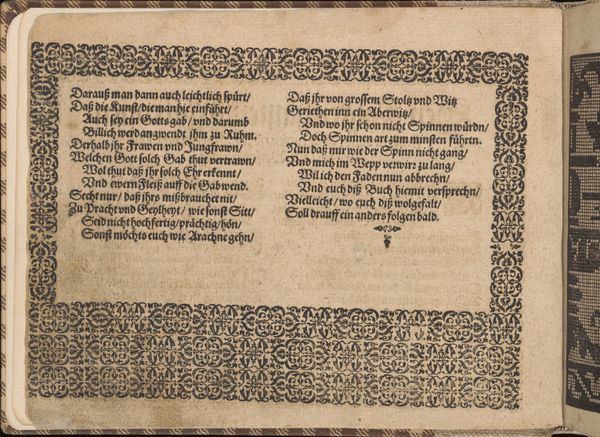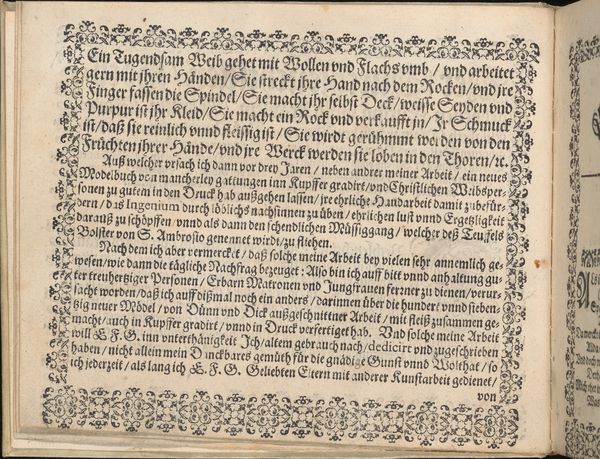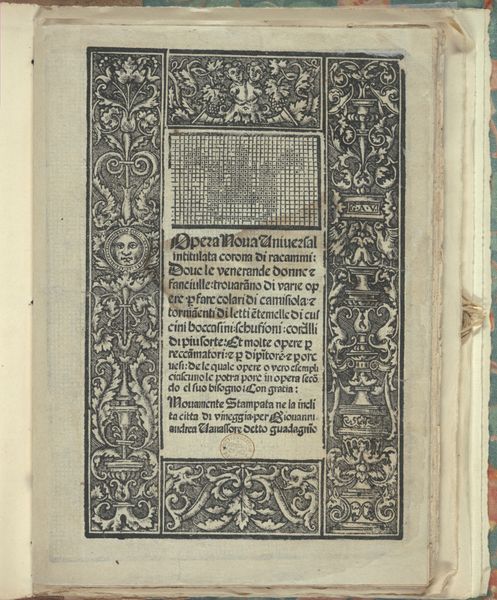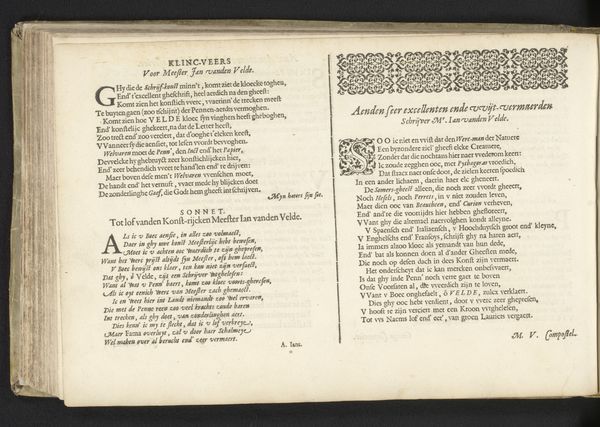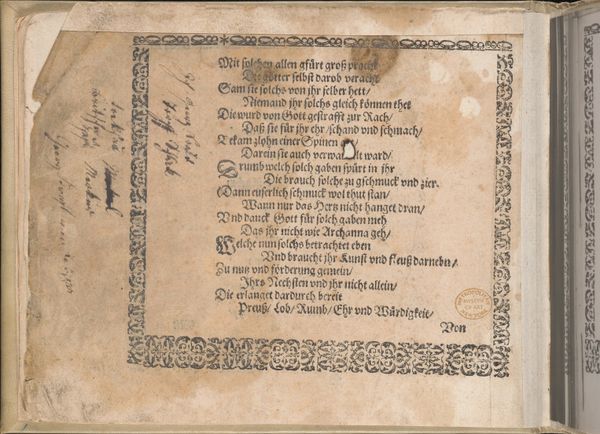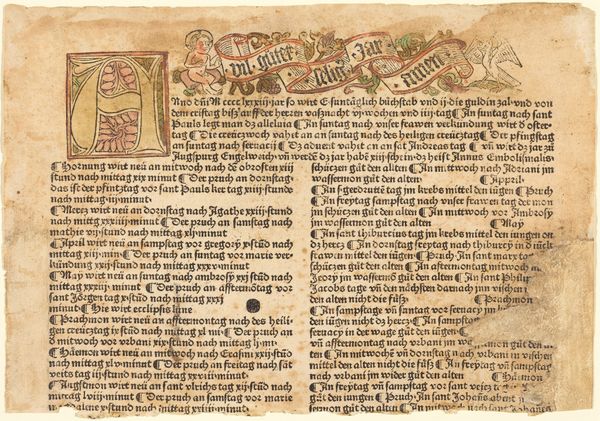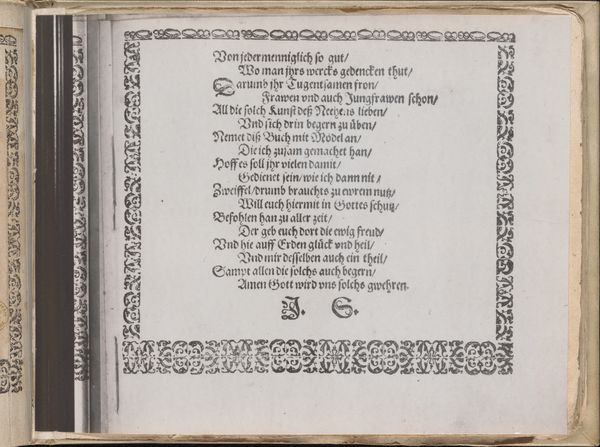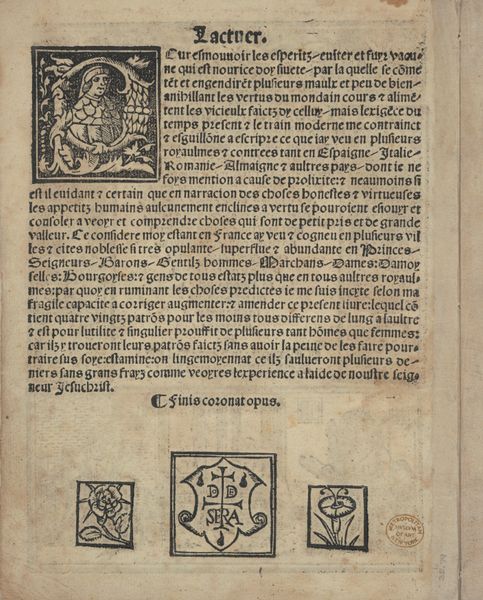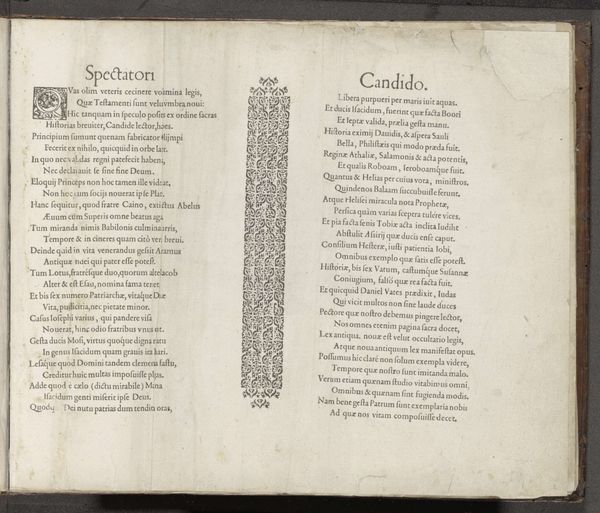
Dedication page of Neu künstlich Modelbuch (page 2v) 1598
0:00
0:00
Dimensions: Overall: 6 1/8 x 7 7/8 in. (15.5 x 20 cm)
Copyright: Public Domain
Curator: Here we have the dedication page of Neu künstlich Modelbuch, created around 1598 by Bernhard Jobin. It’s a print, likely woodcut, on paper with ink, now residing at the Metropolitan Museum of Art. The work blends typography with decorative borders. Editor: My initial feeling is that the page is visually intense. The typeface itself, that old blackletter, combined with the swirling border—it gives off an air of both scholastic weight and slight unease, almost claustrophobic with the elaborate detail packed into the frame. Curator: Indeed. The piece is a dedication within a model book, which were pattern books used by artisans, often for embroidery or other crafts. We need to see the dedication itself as a socio-historical object, promising not just technical skill, but proper moral application. Notice how the script reminds women to appreciate god's gifts. Editor: You mean how the dense script warns them against vanity? Yes, it strikes me as moralizing hidden inside art instructions. The book, ostensibly about *creating* beauty through needlework, uses the frontispiece to kind of shame its target demographic to remember their place. Crafting is good, unless you get haughty. The border itself almost mimics a spiderweb trapping these messages inside its structure, which is...darkly brilliant. Curator: Absolutely, the "arachne" line really speaks to the role of the craft. The book doesn't just convey designs; it reinforces social hierarchies. Look at the detail of the ornamental border. This acts as a status signifier and is made more available because it’s in a reproducible print format. Editor: I get this unsettling sense, that what seems like an artistic empowerment via patterns, it is actually kind of prescriptive for behavior and gender, I appreciate the craftsmanship—the design itself *is* compelling—but that text casts this kind of long shadow, really makes one examine who had access, and what expectations they carried with it. It's all a kind of carefully stitched narrative, isn't it? Curator: Precisely, thinking through material and reproduction allows for broader engagement of the cultural and socio-political roles and assumptions. Editor: Exactly, the page has prompted questions regarding our role when consuming the piece. Are we also going to take those values for granted and allow for "old lessons" to weave in? Food for thought.
Comments
No comments
Be the first to comment and join the conversation on the ultimate creative platform.
